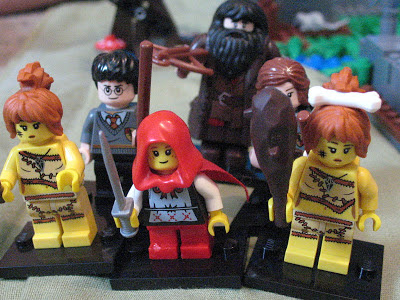The Song Dynasty of China was easily the most wealthy and technologically advanced society in the world in the tenth and eleventh centuries. Much like their contemporary empire to the west, the Byzantines, the Song Dynasty fought nomadic and semi-nomadic peoples who desired the great wealth that abounded in their kingdom.
To historians and wargamers, the Song Dynasty gets little credit due to its military and diplomatic blunders. After losing territory in the north to the Jurchen people's Jin kingdom, Song policy makers too slavish followed the maxim 'the enemy of my enemy is my friend,' and they cultivated an allegiance with the Mongols, who were north of the Jin. When the Mongols turned their sights on the Song after destroying the Jin, China placed far too much confidence in their defensive walls, and were not prepared for the Mongols' mastery of siege warfare. The Song held out longer than many of the Mongol's enemies, but finally fell in 1279.
On the other hand the Song Dynasty lasted about three centuries, if one counts both the Northern Song and the Southern Song periods. That Dynasty can also be credited with developing a standing navy and the implementation of primitive gunpowder weapons into its army.
It was my first purchase from The Assault Group (what a great name, by the way). The sculpts are excellent, and look to be based on some Song-era iron sculptures that are still extant. A pack of four contains four unique figures, and the conscript spearmen could probably used for most any era of China from the Warring States period through early Qing. While a bit chunky, they are comparable in terms of size and heft with the Crusader Miniatures line.
I would love to build a huge army for Clash of Empires, my favorite 'big battle' system, but that is definitely a year away, at least. In the short term, I imagine adapting the Song into SAGA using a Byzantine battleboard. After all, both were heavily missile based armies who had adapted their armies to fighting steppe nomads. Other battleboard abilties should take advantage of China's capacity for levies, as well as some limited abilities based on the psychological effect of firelances or thrown bombs.
Reading Suggestions
Tun Huang by Yasushi Inoue. Inoue, Japanese writer of historical fiction (1907-1991), produced this novel in 1959 about Chao Tsing-te, young Chinese scholar in the early eleventh century. He misses his civil service exam by an accidental nap and after a chance encounter with a woman and a mysterious scroll, he wanders westward towards the title city. Again by accident, Chao finds himself fighting in the Song army against the Xi-Xia. Like a Japanese woodcut, the beauty of Tun-Huang is in its simplicity; an adventure novel, and the search for meaning in the randomness of life.











